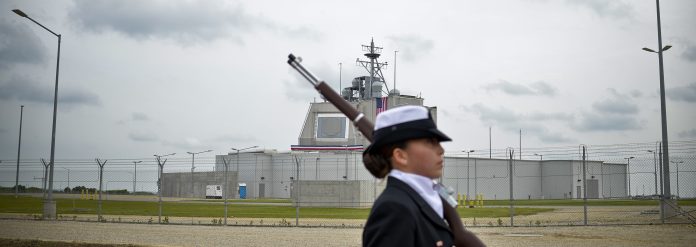Amid rising tensions about the situation in the Middle East following the killing of Iranian military commander Qassem Soleimani by a U.S. drone, there is fresh public interest in NATO’s land-based missile defense system in Deveselu, southern Romania.
What does it do? What missiles can it intercept? Is it fully prepared?
Iran has hundreds of short- and medium-range ballistic missiles which it has been developing since the 1980s based on Soviet, North Korean and Chinese components. It says it has limited the maximum range of those missiles to 2000 kilometers and hasn’t tested any yet that go beyond that range.
However, experts say Iran is working on technologies that could eventually open the way for it to develop long-range missiles, including intercontinental ones that could reach the U.S.
The Shahab–3 is a medium-range ballistic missile (MRBM) produced by Iran based on the North Korean Nodong-1 medium-range missile and can reach targets such as Israel, Egypt, Romania, Bulgaria and Greece, 2,000 kilometers away.
If Iran launched an attack on Romania, a key American ally which is closer than the U.S, what would the missile defense system do?
“The site can launch SM-3 Block IB interceptors against ballistic missiles inbound from Iran,” Commander John Fitzpatrick said in a recent interview with RFE/RL at the missile defense base near Deveselu, about 180 kilometers east of Bucharest.
He said the 24 SM-3 ballistic missile interceptors at the facility are mounted on a “Mark 41 Vertical Launch System.” The same launchers can be used to fire a range of surface-to-air missiles as well as Tomahawk cruise missiles and other offensive weapons.
Each operator’s station at Deveselu contains three computer screens along with communication systems and launch switches that would be engaged to fire the SM-3s at any incoming missiles during an attack on Europe.
President Klaus Iohannis said Tuesday” the anti-missile shield in Deveselu is part of NATO’s defensive system is very good and is functioning optimally.”
The missile is launched from the control room in the heart of the Aegis Ashore, with the order coming from NATO ‘s Allied Joint Force Command based in Naples, Italy. The projectile intercepts the missile and destroys it while it is in the air.
The SM-3 uses solid rocket booster and does not have an offensive capacity, and is considered a kinetic warhead, rather like a bullet intercepting a bullet.



















